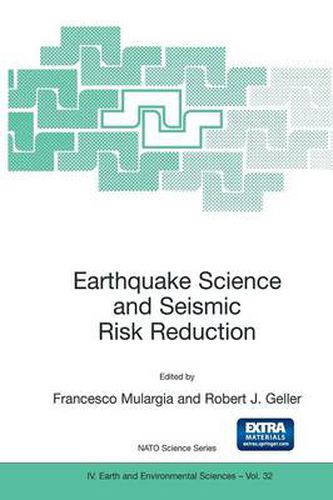Readings Newsletter
Become a Readings Member to make your shopping experience even easier.
Sign in or sign up for free!
You’re not far away from qualifying for FREE standard shipping within Australia
You’ve qualified for FREE standard shipping within Australia
The cart is loading…






This title is printed to order. This book may have been self-published. If so, we cannot guarantee the quality of the content. In the main most books will have gone through the editing process however some may not. We therefore suggest that you be aware of this before ordering this book. If in doubt check either the author or publisher’s details as we are unable to accept any returns unless they are faulty. Please contact us if you have any questions.
What is the first thing that ordinary people, for whom journalists are the proxy, ask when they meet a seismologist? It is certainly nothing technical like What was the stress drop of the last earthquake in the Imperial Valley? It is a sim ple question, which nevertheless summarizes the real demands that society has for seismology. This question is Can you predict earthquakes? Regrettably, notwithstanding the feeling of omnipotence induced by modem technology, the answer at present is the very opposite of Yes, of course . The primary motivation for the question Can you predict earthquakes? is practical. No other natural phenomenon has the tremendous destructive power of a large earthquake, a power which is rivaled only by a large scale war. An earth quake in a highly industrialized region is capable of adversely affecting the econ omy of the whole world for several years. But another motivation is cognitive. The aim of science is ‘understanding’ nature, and one of the best ways to show that we understand a phenomenon is the ability to make accurate predictions.
$9.00 standard shipping within Australia
FREE standard shipping within Australia for orders over $100.00
Express & International shipping calculated at checkout
This title is printed to order. This book may have been self-published. If so, we cannot guarantee the quality of the content. In the main most books will have gone through the editing process however some may not. We therefore suggest that you be aware of this before ordering this book. If in doubt check either the author or publisher’s details as we are unable to accept any returns unless they are faulty. Please contact us if you have any questions.
What is the first thing that ordinary people, for whom journalists are the proxy, ask when they meet a seismologist? It is certainly nothing technical like What was the stress drop of the last earthquake in the Imperial Valley? It is a sim ple question, which nevertheless summarizes the real demands that society has for seismology. This question is Can you predict earthquakes? Regrettably, notwithstanding the feeling of omnipotence induced by modem technology, the answer at present is the very opposite of Yes, of course . The primary motivation for the question Can you predict earthquakes? is practical. No other natural phenomenon has the tremendous destructive power of a large earthquake, a power which is rivaled only by a large scale war. An earth quake in a highly industrialized region is capable of adversely affecting the econ omy of the whole world for several years. But another motivation is cognitive. The aim of science is ‘understanding’ nature, and one of the best ways to show that we understand a phenomenon is the ability to make accurate predictions.